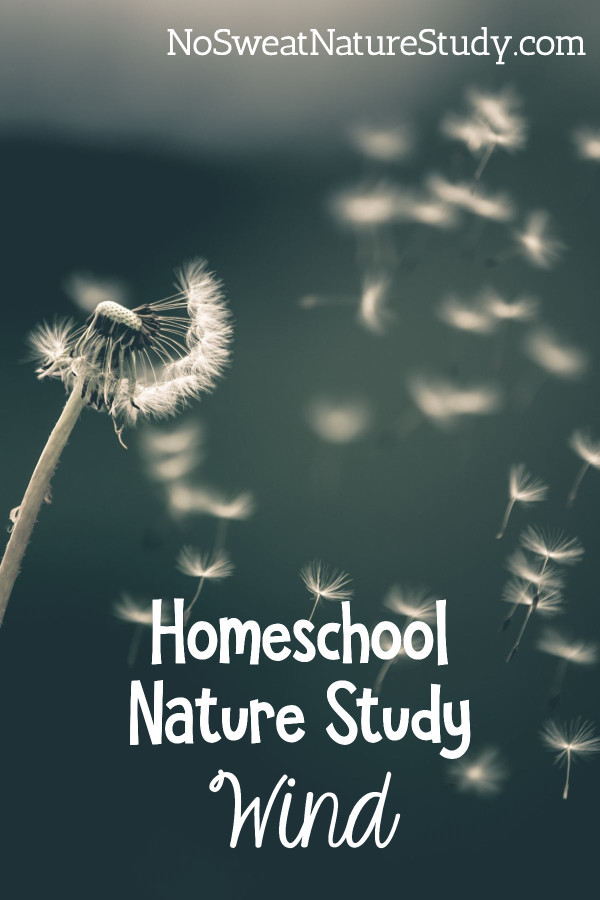Wind Nature Study
We’re in for a windy ride today! How can we do a wind nature study when we can’t see wind and can’t even really hear it? Great question! Observing the wind is less about looking for the nature specimen and more about looking for signs that it’s there.
What is wind?
If you had to give a definition of wind, what would you say? The wind is a little hard to describe since we can’t actually see it, but we definitely know that it’s there because of the way it moves things as it blows.
So what’s an official way to describe it? Well, the dictionary says it’s the “perceptible natural movement of the air, especially in the form of a current of air blowing from a particular direction”. I’m not so sure that was entirely helpful. Or was it? Let’s break that definition down just a bit…

This post contains affiliate links.
Perceptible means we can either see something or notice it. So when air is moving, we can see signs that let us know it’s moving. The rustle of leaves of a tree and a flag flapping on a flag pole are both examples of wind being perceptible to us. We can see those things and notice the air is moving.
Now, the definition said that wind is the movement of air, especially in the form of a current of air blowing from a particular direction. If you’ve ever flown a kite, I bet you are able to tell that the wind was mainly blowing in one direction because your kite kept flying the same way. While you couldn’t see the wind, you could tell that it was coming from one specific direction and carrying your kite along as it passed by.

Why does the wind change?
You know that sometimes the air seems relatively still and you might only see the leaves on a tree shiver every once in a while as the air moves. But other times, the air is moving so fast and rushing past so hard that we get warnings from the meteorologist to secure loose things in our yard and stay indoors.
Why is the wind gentle sometimes and not at other times? It’s a little hard to understand, but basically, as the earth rotates, the sun heats some parts more than others. In warmer spots, the air expands and rises. As it rises it leaves low air pressure below it. In colder spots, the air is cool and it falls, making something called high pressure.
The air is made of gases that like to move from high pressure to low pressure areas. And this movement is what creates wind. The bigger the difference between the high and low pressures in an area, the faster the movement is. The faster the movements, the more perceptible the wind is to us.

Wind Nature Walk Challenge
Today’s nature walk challenge is easy peasy. Grab your nature journal and colored pencils before heading out the door and go on the hunt for things that are moving in the wind. As you sketch the things you see, try to make them look like they’re in motion and try to show whether that motion is gentle from a gentle wind or powerful from a powerful wind.
Here is an extra challenge for those of you that love photography. Bring along a camera and try to capture the movement of wind on some specimens. It’s harder than you think to take a picture that proves that the wind is blowing.
Whether you draw sketches or take photographs, have your parents share them on social media and tag me @ourjourneywestward so I can see just how windy it is where you are today!

Next week, we will be learning about sedimentary rocks. Until then, happy nature exploring!
Links & Resources
Please leave a rating or a review on your podcast app! It helps the podcast to show up for more people…which means more families can enjoy science through the wonderful lens of nature study! Thank you!










